Growing carrots in Siberia: the best varieties for open ground
The Siberian climate requires not only competent care of plants, but also a zoned selection of seed material. Siberian agronomists annually produce new seeds that are resistant to the region’s climate, but gardeners are wary of them, preferring old, proven varieties. We will tell you in detail below which carrot seeds to choose for planting in Siberia.
Features of the climate in Siberia
The Siberian climate is characterized by cold, snowy winters, which sometimes last until early May, and frequent spring (and sometimes early summer) frosts. This leaves an imprint on the selection of carrot varieties for the region. Summer can be damp, rainy or, conversely, dry and dry.
Attention! Varieties adapted to the region are a necessity for obtaining a high-quality harvest.
In most of Siberia, the climate is sharply continental, with frosty, dry winters lasting 6-7 calendar months. Spring is short, late, with frequent returning cold weather. June is hot and dry, while July and August can bring heavy rain and frequent thunderstorms.
The summer season in Siberia comes to an end already in August, since September is characterized by sharp cold snaps, and the first ten days of October brings sub-zero temperatures.
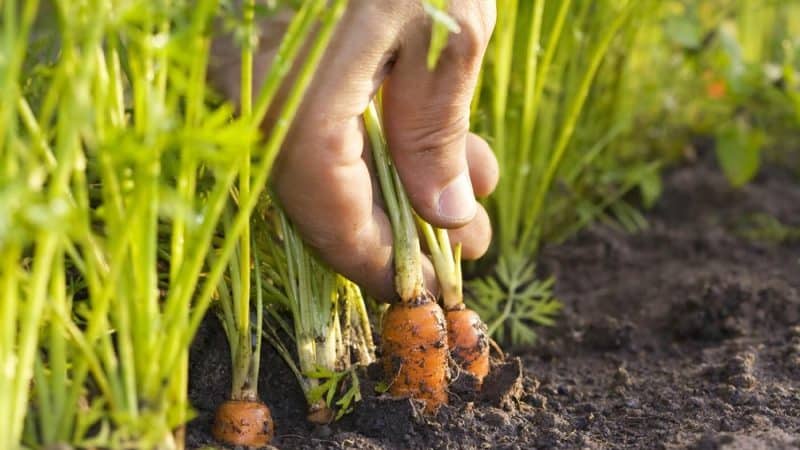
In Western Siberia, climatic conditions are milder. The Altai Mountains serve as a natural barrier to cold winds, and the Vasyugan swamps moisten the dry summer air.The average winter temperature here is from –15 to –25°С, summer temperature – from +15 to +35°С.
In Eastern Siberia it is much colder in winter, and snow falls in the second ten days of October. Summers are sunny but cold, with rare precipitation. The northern territory is practically unsuitable for agriculture due to permafrost.
What are the differences between carrot varieties for Siberia
The varieties released for Siberia are mainly early varieties and have a short growing season, which allows them to grow crops in a short summer. They are resistant to frost, drought and rainfall, but produce small harvests that do not last long.
The best varieties are considered to be frost-resistant and unpretentious varieties, resistant to flowering, with a dense sweet core.
Features of planting carrots in Siberia
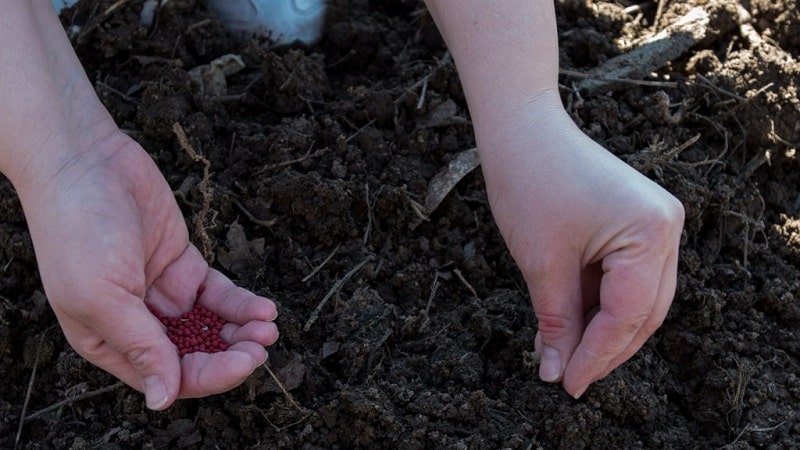
The most common option for planting carrots in Siberian conditions is spring. In warm winters and early springs, crops are sown already in April - May, provided the air and soil have warmed up. For sowing, choose open sunny areas.
Autumn sowing is carried out less frequently, although it provides vegetables already at the beginning of summer. This method is associated with high risks of early frosts, winters with little snow and severe cold, which will destroy the crop even under dense snow cover. In addition, the method requires careful preparation of the soil.
Timing, preparation of seeds and soil
Spring sowing of carrots occurs mainly at the beginning of May; during a long winter, it is sometimes delayed until the middle or last ten days of the month.. The soil should have time to warm up, but remain loose and moist. Winter carrots are sown in early or mid-October, depending on weather conditions. Sowing is carried out in frozen ground so that the seeds do not start growing ahead of time.
For sowing, it is better to choose seeds in granules or on tapes, although farmers prefer to resort to classic sowing using river sand. The seeding depth is about 2 cm with a distance between rows of 10-20 cm. Carrots are sown densely, followed by thinning of the plantings.
The soil for spring planting is prepared at least a week before sowing: level and water with hot water at about +50°C, adding humus, manure or compost. The soil should be loose, without lumps or solid pieces of organic matter - it should be crushed and dug up along with the soil. In the fall, before planting, superphosphate and potassium salt are added to the soil.
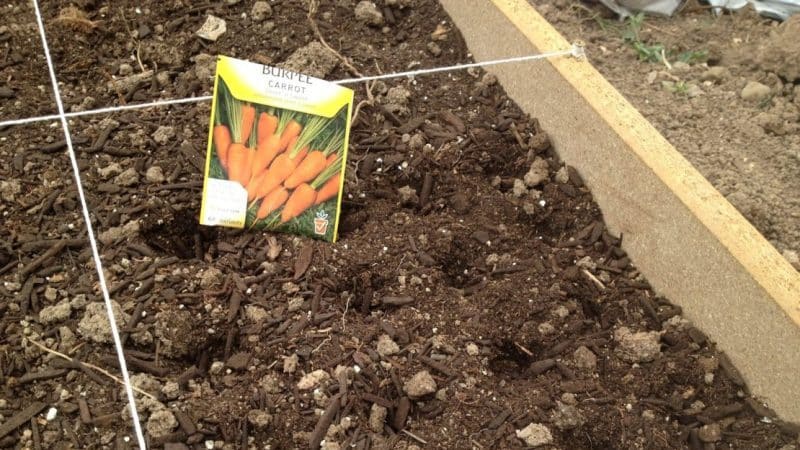
The best varieties of carrots for growing in Siberia
Despite its unpretentiousness, the vegetable is grown taking into account the region, since the seeds may not take root or may not have time to ripen on time. Most often, early varieties and hybrids are used for sowing, but for autumn planting, mid-season and late varieties are suitable.
Early
Early varieties have a ripening period of 60-90 days, which in the case of early spring and warm, long summers sometimes allows you to harvest two carrot crops per season:
- Losinoostrovskaya 13. The growing season is 90 days, produces root crops weighing about 150 g and a length of 14-16 cm. Root crops have a cone-shaped shape and bright color, which ensures consumer demand for them. Productivity – up to 8 kg per 1 m². Resistant to frost.
- Nantes. The growing season is 85-90 days. Root vegetables are 12-14 cm long, smooth along the entire length, with a rounded tip, pinkish-orange in color. Average weight – 100 g, yield – up to 6 kg per 1 m². Disadvantages: incomplete immersion in the soil and greening of the neck and top of the root crop.
- Belgien White. It produces a harvest 60-75 days after sowing. The white color is due to the absence of carotene in the composition.The root vegetables are small, weighing about 80 g and up to 10-15 cm long, thin, even along the entire length. Valued for its large amounts of vitamin B, calcium and zinc.
Mid-season
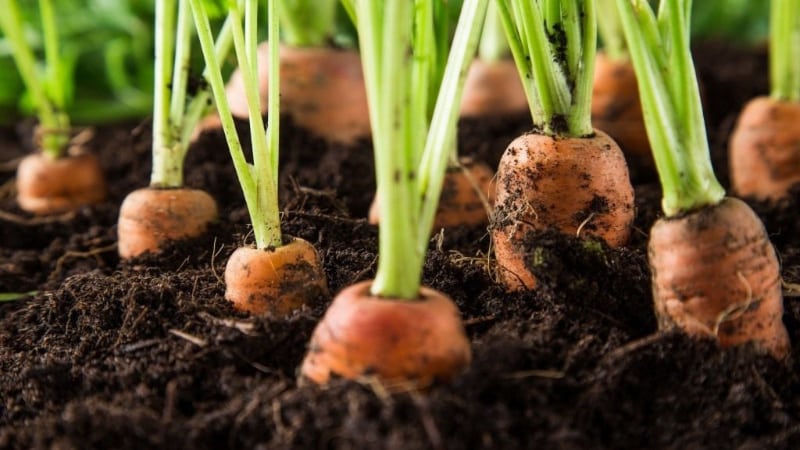
Mid-season varieties ripen in 90-115 days, have a long shelf life, but require regular weeding and loose soil:
- Viking. Productivity – up to 6 kg per 1 m². A large variety with pale orange cone-shaped root crops up to 18-20 cm long and weighing up to 160 g. They require a lot of space, need thinning of crops and loosening of the soil. Ripen in 100-105 days from sowing.
- Vitamin 6. The most famous variety. Root crops are 14-20 cm long and weigh from 70 to 200 g. Productivity is up to 5-7 kg per 1 m². The variety is unpretentious and frost-resistant, but has no immunity to diseases.
- Canada F1. Hybrid most suitable for black soil. The root crops are cone-shaped, bright orange, up to 20 cm long and weighing 130-190 g. An unpretentious, frost-resistant variety grows even on clay soil. Productivity – up to 8 kg per 1 m².
Late
Late varieties with a growing season of more than 110 days are practically not used or are planted as winter crops. They are stored for a long time, but are less sweet compared to early and mid-season varieties:
- Incomparable. Variety for sandy and clayey soils. Maturing time is up to 130 days. The root crops are cylindrical, weighing 80-140 g and length 19-21 cm. Productivity - up to 7 kg per 1 m². The frost-resistant variety is ideal for autumn sowing.
- Nevis F1. Hybrid with a growing season of 115-120 days. The root crops are cylindrical, up to 18 cm long and weighing 120-150 g. Productivity – up to 9.5 kg per 1 m². The hybrid is disease resistant and is used for juices and preservation. The fresh shelf life is up to 8 months.
- Vita Longa. A variety with development time up to 155 days.Root vegetables without a distinct core contain a high percentage of sugars. They have a cone-shaped shape and a bright orange color, formed due to a high percentage of carotenoids. Root crops reach a length of up to 40 cm, a weight of up to 250 g. Productivity is up to 7 kg per 1 m². The variety is suitable for greenhouse cultivation.
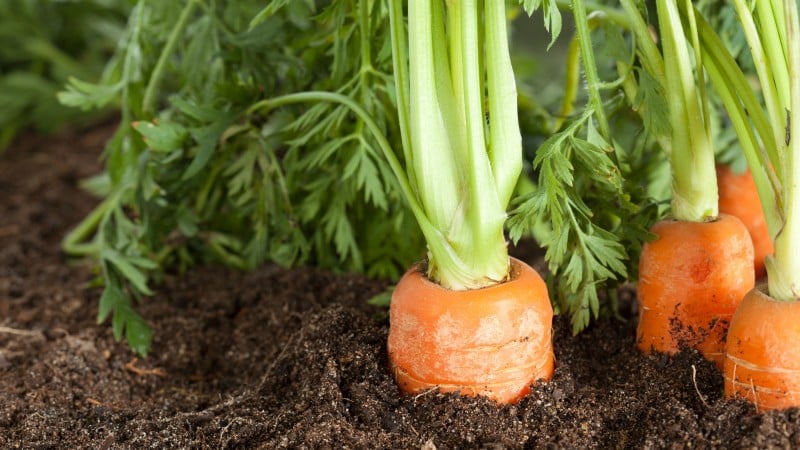
The most productive varieties
Productivity depends not only on the variety, but also on proper care during the growing process. The most genetically productive include (per 1 m²):
Reviews
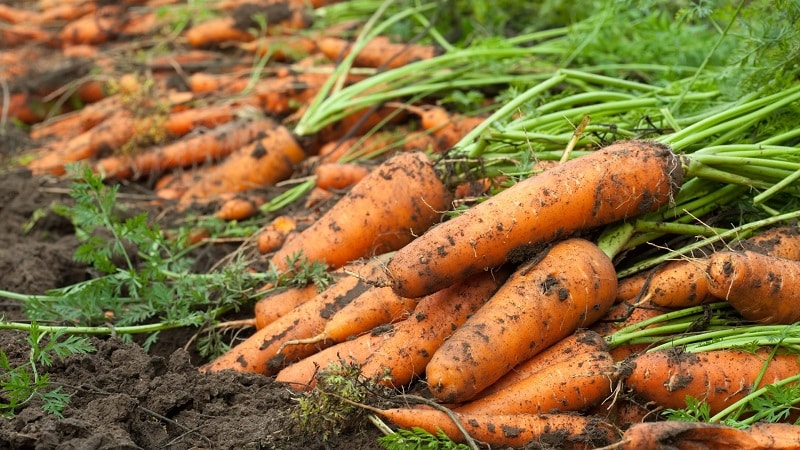
Gardeners in Siberia are forced to empirically select varieties and hybrids of carrots in order to accurately determine which one will bring a rich harvest.
Margarita, Omsk: “Based on reviews, I chose Rondo; not every carrot will grow in Siberia. This hybrid managed to ripen over the summer. The result was small, bright, round root vegetables that the children liked and ate from the garden.”
Chunaev Nikolay, Barnaul: “I give preference to autumn planting of carrots; in this regard, Nevis and Incomparable are the best, even modern hybrids are far from them. They do not freeze, the yield is always high, they are unpretentious. At the beginning of summer they go well on the market at milk ripeness.”
Ryzhikova Olga, Novokuznetsk: “I’m currently experimenting with the choice of varieties, but for comparison I always keep Losinoostrovskaya. So far I have not found a better variety for myself, either in terms of care, or in terms of taste and commercial qualities. They are sold at the market because of their shape and bright color. It ripens quickly, literally in two months; in cold summers it can sit a little longer. When preserved, it does not lose color. It’s a little dry, I don’t use it for juice processing.”
Conclusion
The best varieties for the Siberian region are considered to be early ripening, frost-resistant and unpretentious.Early varieties have time to ripen in a short summer, while later ones are more suitable for winter plantings. The first sowings begin no earlier than the third ten days of April, and during a long winter - in mid-May. Root crops are sown thickly, followed by loosening and thinning the beds. The crop is harvested after 60-110 days, depending on the variety.